There are 22 good companion plants for cucumbers in this list with a variety of root vegetables, herbs, and even flowers to round things out. We will also go over and explain why you should never plant 7 certain plants near your cucumbers. These plants may attract cucumber eating insects, compete for food and water, or make your cucumbers taste bad.
When growing cucumbers, companion planting can help in so many ways. With the right companions, you’ll get a better yield, possibly better tasting cucumbers, and the right plants can help fend off invasions from hungry pests.
There are plenty of cucumber varieties you can choose from. Whether you’re looking for a great pickling cuke or something you can slice up and throw into your salad, there are cucumbers to choose from. This crunchy, “cool” summer treat is full of nutrition and great taste fresh or when pickled.
Most cucumbers like to climb, so you’ll need some type of structure to help them get off the ground. If you don’t have a fence, or don’t want a bunch of structures crowding your landscape, you can grow a living trellis for them. Corn and sunflowers are examples of two great companions that cucumbers can scale.
Do you have a problem with insects eating everything you grow? Plant some dill, marigolds, or nasturtiums with your cucumbers. These plants will either repel them, attract beneficial insects to take care of them, or become sacrificial plants so your veggies can grow in peace.
Tips For Growing Great Cucumbers
The expression may be “cool as a cucumber,” but this family of cucurbits likes it warm! They will either go dormant, refuse to grow, or die outright when the temps get too cold, so wait for the soil to warm up before attempting to grow these chill veggies. Cucumbers like soil temps around 75 degrees Fahrenheit.
Cucumbers are full of water so they also need a good amount of moisture. Once established, cucumbers need between an inch to two of water per week. They have deep taproots that can get water from below, and they have some shallow roots that grab water from the surface.
When watering your cucumbers be sure to avoid soaking the leaves and vines. Instead use a soaker hose, or a gentle watering can to keep from splashing water and soil onto the leaves. Too much humidity and water on the leaves can cause powdery mildew or other fungal infections.
Adding a layer of mulch, straw, or plastic sheeting can help retain moisture and aid in preventing these infections. Mulch can also help cool the soil when it gets really hot, and retain warmth during the unexpected cold snaps.
Cucumbers are heavy feeders, so you’ll need a rich, well draining soil to keep these heavy producers happy. Adding a layer of compost in the middle of the growing season is a good way to keep them happy. Earthworm castings are another organic way to add much needed nutrition to the soil.
Lastly, you may need to attract pollinators or pollinate the flowers yourself for a large cucumber yield. There are some self-pollinating varieties available, so do your research to make sure you know which kind you have. For the heirloom varieties and others that need pollinators, there are companion flowers you can add to your garden that will naturally increase this activity, so let’s get into it.
Table of Contents
Best Companion Plants For Cucumbers
1. Beans
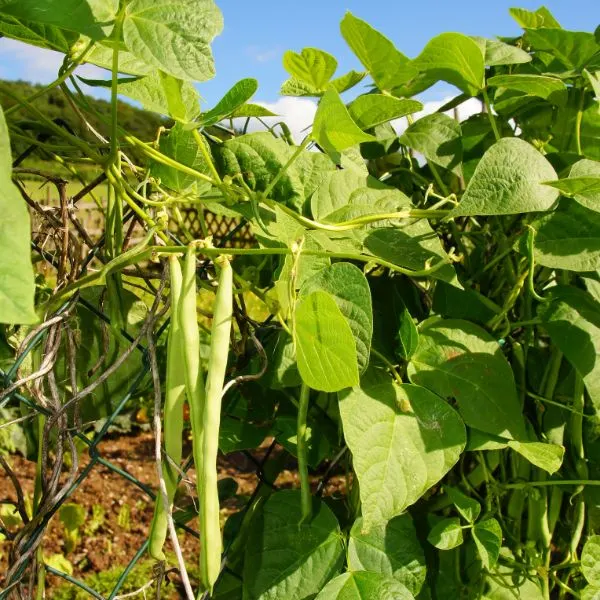
All bean plants help to pull nitrogen up from deep in the soil; they are called “nitrogen fixers.” Cucumbers are considered heavy feeders and will require fertilization at time throughout the growing season. Beans help to keep cucumbers fed and healthy. You can plant both bush types or vining climbers, but there’s a caveat associated with climbing beans.
If you plant vining beans with your gherkins, they will need to be spaced far enough apart from cucumbers so that they don’t compete for sunlight and space on the trellis. You may even want to start cucumbers several days before the beans so they have plenty of time to get a good head start.
Bush beans can be planted closer together because the cucumbers will tower over them and there will be no competition for space or sunlight. When planting bush beans and cucumbers together, again it may be beneficial to make sure your cucumbers get a head start and are a few inches high before planting your beans near them.
2. Peas
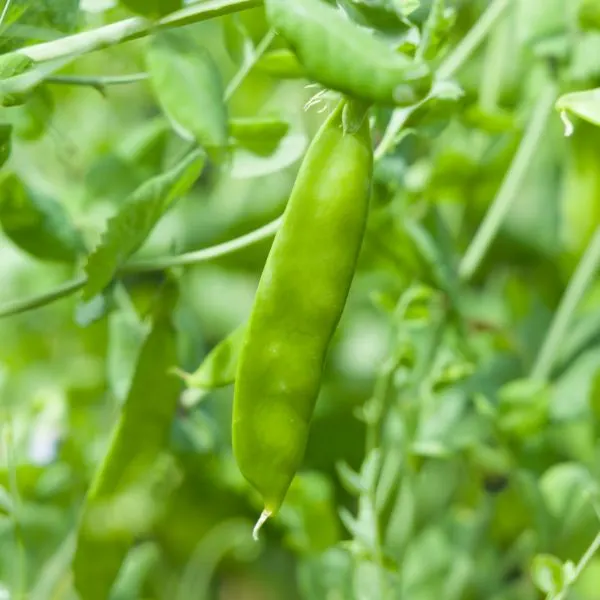
Most types of peas are cooler weather crops and can survive a light frost, and like beans, they are nitrogen fixers. If you start peas during early spring, they should be established and producing well when it’s time to plant cucumbers.
Don’t worry about cucumbers crowding out or stunting your peas, when it starts to get hot—the way cucumbers like it—your peas will be nearing the end of their growing season. The peas will have added a lot of nitrogen to the soil, so your cukes will have an early banquet waiting for them.
Start your peas in the early spring, and once they near the end of the growing season, add some cucumbers. Then as your cucumbers near the end of their growing season, you can plant a second crop of peas, especially if you live in an area that has an extended fall season.
3. Corn
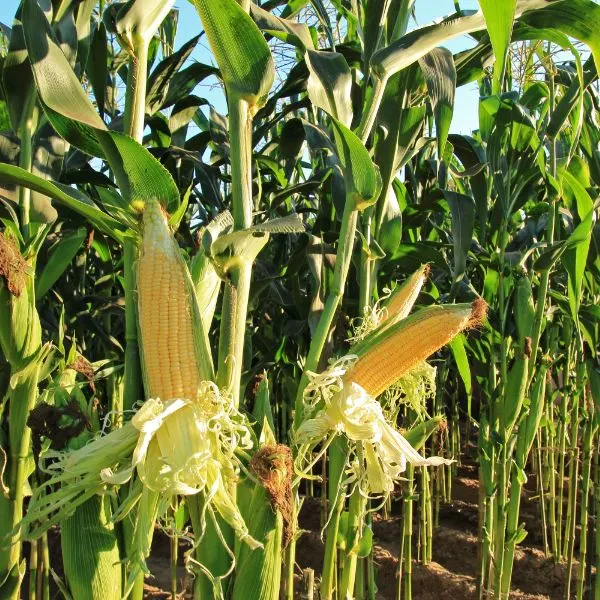
Tall corn stalks can be a natural trellis for cucumbers. You’ll have to plant your corn about 2 to 3 weeks before you sow your cucumbers so the stalks will be strong enough to hold them though. If you go this route, you should only plant smaller cucumber varieties like Kirby, lemon, or gherkin types.
Long, heavy cucumbers could topple your corn, especially if they are heavy producers, or if you accidentally miss one or two. I’ve missed the occasional cucumber only to find a woody, 2 or 3 pound monster lurking in the shadows.
Cucumbers will also benefit corn by repelling raccoons and possibly deer. These animals seem to dislike the hairy stalks and leaves of cucumbers and squash so it’s a mutually beneficial companionship between these garden favorites.
Planting corn and cucumbers together will require additional fertilizer though because they are both heavy feeders. Look for a 10-10-10 or even a 20-20-20 and follow the directions on the package to keep both these plants fruitful and healthy.
4. Peppers

Like cucumbers, peppers also love warmer weather, and can’t handle cooler temps (much like me). Since cucumbers can take up a lot of garden space with a trellis and everything, bushy pepper plants work great to maximize your garden space.
Plant your peppers in front of the trellis so they aren’t shaded by the cucumbers. The peppers won’t disturb the cucumber’s roots and will help to keep weeds at bay because the big bushes shade the ground and act as a natural barrier.
This is a great way to conserve space in smaller gardens and raised beds, especially since pepper plants can take up a lot of precious real estate. Both these plants like the same soil conditions as well so here is a win-win.
5. Radishes
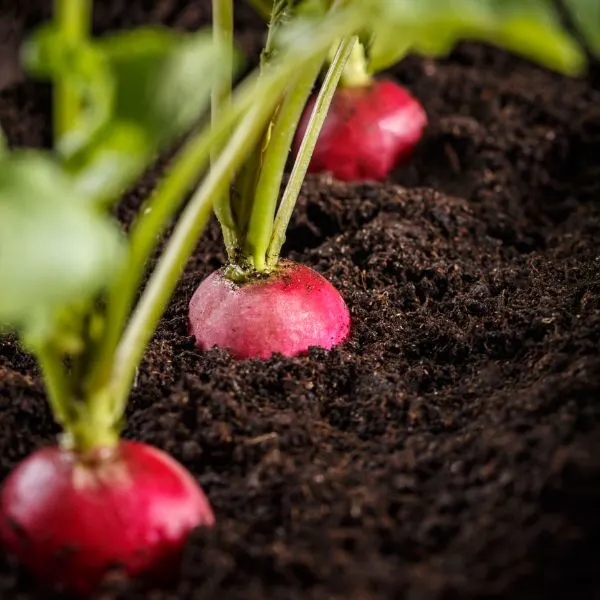
One of the fastest plants you can grow in your garden, radishes are great to plant along with your cucumbers. These little root veggies are ready to harvest in as little as 21 days after planting them, depending on individual varieties.
Because cucumbers and radishes have single tap roots, they won’t disturb each other, even when you harvest the radishes. Radishes help to prevent weeds with their low growth habit and bushy tops. They also work to aerate the soil so cucumber roots are able to get more moisture and grow deeper.
Another wonderful benefit to planting radishes among your cucumbers is they work to repel the devastating cucumber beetles. These voracious insects can quickly destroy cucumbers and squash plants. They’re one of the biggest cucumber pests in the garden, but you won’t have that problem if you plant radishes around the vines.
Radishes produce a scent that confuses and repels some insects like the cabbage beetle. The greens on radishes can also be used as a trap crop for other pests. Some insects such as flea beetles and cabbage moths will happily munch on radish greens instead of cucumbers, making them a good sacrificial crop.
You may even let a few radishes continue to grow even after they become inedible. Radishes will eventually bolt and flower, you won’t want to eat them at this time, but the flowers will draw in pollinators.
After you’ve harvested all the radishes you and your family will consume, leave a few to do as they please. They will continue to repel bad bugs but will draw in bees, moths, and other beneficial insects. Plus you can harvest the seeds for more radishes next year!
6. Carrots And Parsnips
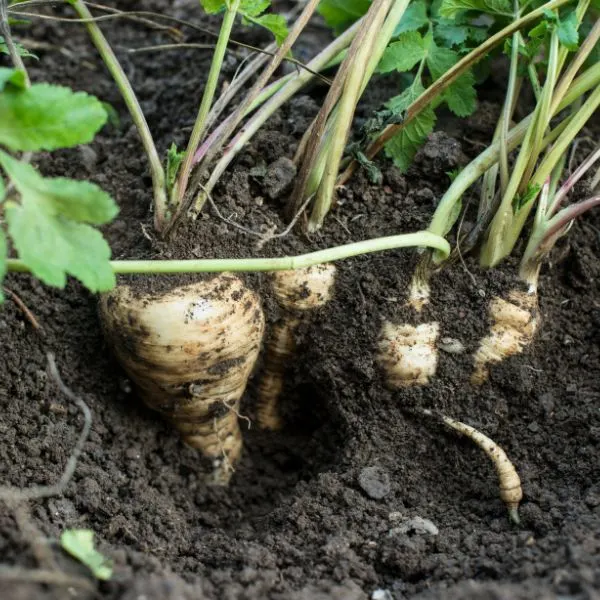
Another couple of root vegetables that won’t interfere with cucumber roots include carrots and the close cousin the parsnip. Both have long taproots that usually grow straight down. You can plant both of these root vegetables close to cucumbers without the worry of harming the roots.
Like radishes, carrots and parsnips help to aerate and break up the soil, only they grow deeper. These plants also have dense greens that grow above ground that act as a natural mulch for tall growth crops such as cucumbers. This natural barrier will help prevent weeds and keep the soil moist longer.
Carrots take a long time to mature so plant them way before your cucumbers. As the carrots grow, they will help loosen the soil, and won’t take up much space at all.
7. Lettuce
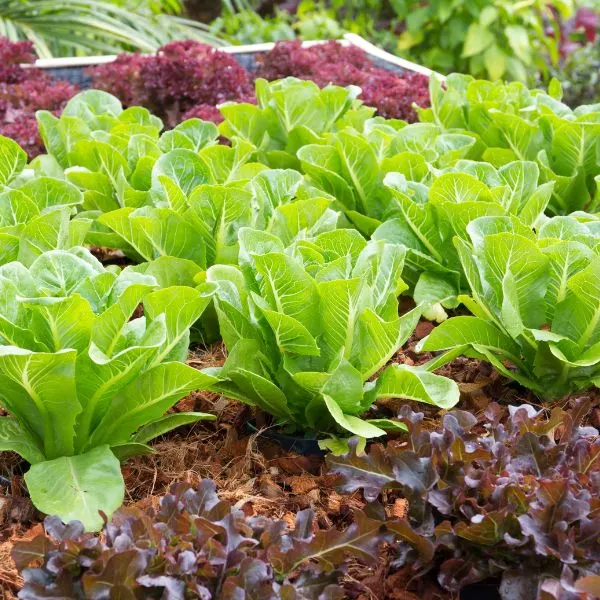
What do most salads have in common? Lettuce! Since cucumbers are a great addition to most salads, why not have a natural “salad kit” growing in your garden?
Lettuce and cucumbers not only complement each other in a salad, but they work equally well together in the garden. Lettuce plants have shallow roots that won’t disturb cucumbers. With the small, shallow roots and large leafy greens, lettuce helps to provide a natural mulch for cucumbers.
Lettuce will help keep some weeds at bay and it works to retain moisture in the ground. Not to mention, when you’re needing a quick salad for dinner, you can go straight to the garden, and pluck several lettuce leaves and a few cucumbers at the same time.
8. Tomatoes

Tomatoes and cucumbers go great together in a salad or on a sandwich, but how well do they get along in the garden? Actually, they grow surprisingly well together and make great garden companions. They both require similar amounts of water and fertilizer and like the same kind of soil conditions.
Since they require very similar needs in the garden, you won’t be over watering or overfeeding one plant while trying to properly care for the other. Again, you’ll need some organic fertilizer, and be sure to water close to the ground for both of these plants.
Tomato plants can attract pollinators such as bumblebees, so if you have a cucumber variety that needs this action, tomatoes can help.
Just be sure to plant these veggies in a way they don’t shade each other. Both tomatoes and cucumbers need plenty of sun, so plant your tomatoes in front of the cucumbers.
9. Beets And Turnips
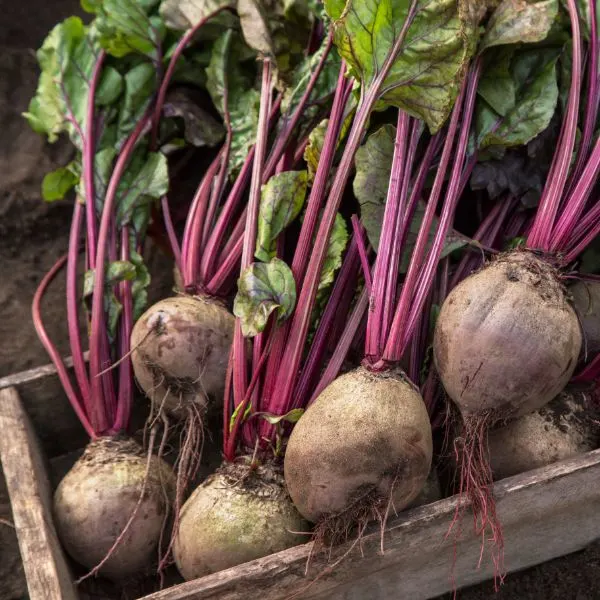
Another couple of root vegetables that will help you maximize your space include beets and turnips. Both of these sweet tasting roots grow perfectly well with cucumbers. Again, like the other roots mentioned in this post, both beets and turnips won’t disturb cucumber roots.
Both these roots are cool weather crops that can help loosen the soil for cucumbers. They also help to mulch the soil with the leafy greens that grow out of the tops.
These veggies are quick growing so you can do succession plantings to increase output throughout the season. Plant both of these root veggies in front of your cucumbers so the tall vines don’t shade out the turnips and beets.
10. Garlic
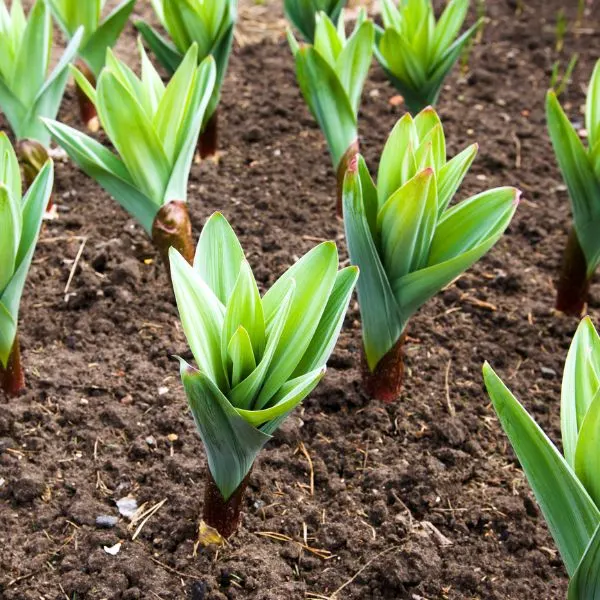
Garlic is a powerhouse vegetable that every gardener should grow. Not only does this bulb taste great in almost everything (that’s not just an opinion, it’s an actual fact…well, maybe not, but it should be!) But garlic is packed with nutrients, and it repels a huge number of pests.
And all that isn’t even the best part about garlic planted with your cucumbers! Garlic will boost essential nutrients in the soil, which helps cucumbers grow bigger, and stronger, and produce more. That’s right, grow more garlic, and get more cucumbers.
Garlic increases the levels of calcium, nitrogen, phosphorus, potassium, and manganese. All of these are essential in any garden. Since cucumbers are heavy feeders, garlic only helps them grow even better.
The pungent smell of this bulb also repels most unwanted insects, and it can repel rabbits, deer, and other animals looking to eat your hard work. Garlic doesn’t take up much space either, they only need a few inches of space between each other.
When this plant flowers, it attracts bees, butterflies, ladybugs, and lacewings. By “shooing” away detrimental bugs, while attracting predatory bugs and pollinators, garlic provides a knockout punch in the garden.
The only downside to garlic is the long growing season it needs. If you plant garlic the same year as your cucumbers, you won’t be able to harvest it until the next season. Garlic needs an extended cold period to multiply its cloves. It will still grow, but the bulbs will be very small without a winter cold spell.
If you plant garlic this spring, leave them in the ground after your garden is finished, and you’ll still have the bug repelling properties next spring and summer. Then you can harvest them and make pickled garlic, dry them, or pluck off the cloves and grow more for next year!
11. Onions
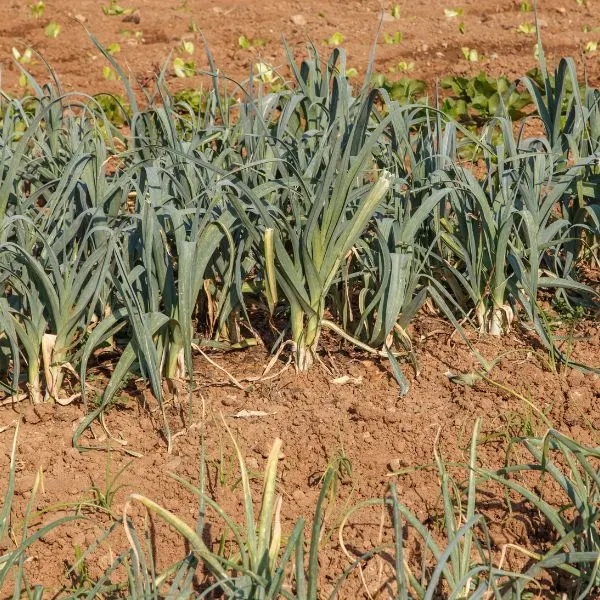
Onions are another member of the allium family that includes garlic. Much like garlic, onions won’t disturb cucumber roots, and the pungent smell keeps a lot of insect pests and animals away.
Onions will help to keep Japanese beetles and rabbits away. You can also maximize space by planting onions among your cucumbers. Onions won’t compete for nutrients, water, or sunlight and you can plant many of them in the space around your cucumbers.
12. Celery
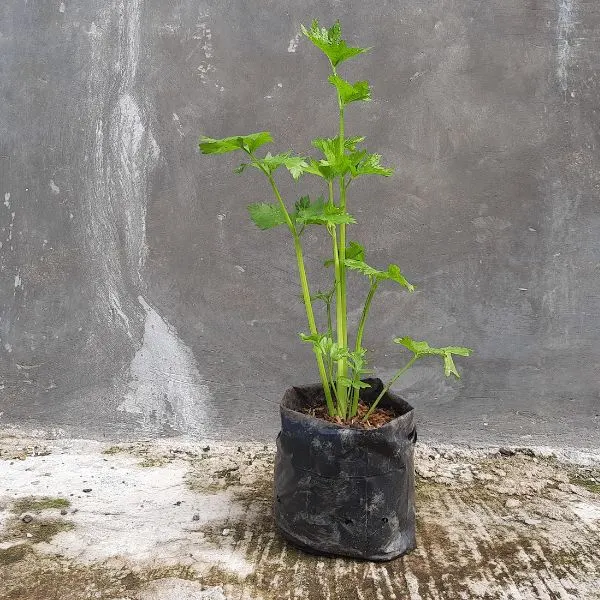
Unlike most of the previous entrants here, celery can be planted on the shady side of your cucumbers. In the heat of summer, when your cucumbers are thriving, celery may slow down, but when it’s planted in the shade of your vines, celery will continue to grow.
If you have the space, plant some peppers, tomatoes, beets, or corn on one side of your cucumbers, then plant a row of celery on the shady side, and they will all be happy. Another benefit to planting celery is it helps to repel whiteflies.
These tiny sap suckers can stunt or severely damage your cucumber plants. Once they establish themselves, they are difficult to eradicate. Keep them at bay with the strong smelling celery.
Herbs
13. Catnip
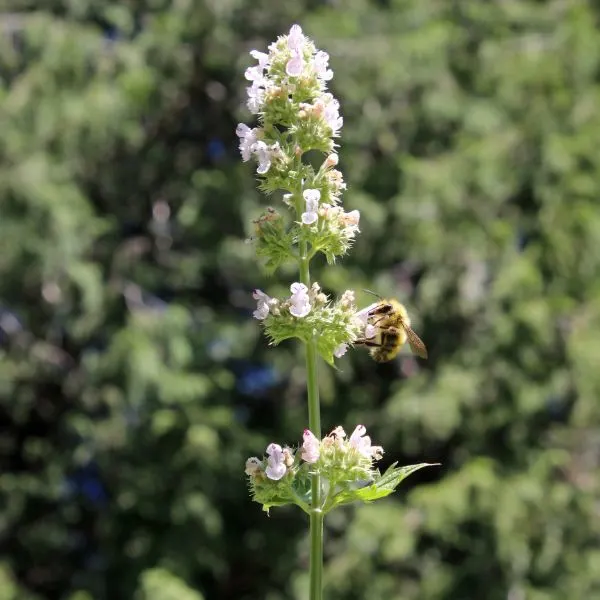
Herbs are great companions for much of your garden. Though there are a few that don’t belong together, interspersing herbs throughout your garden is mostly very beneficial. Not only do herbs provide plenty of nutrients when consumed, but they repel most garden pests while attracting beneficials.
Catnip is one of those herbs and it works great with cucumbers. While your cat may love this herb, bugs such as aphids, Colorado potato beetles, cabbage loopers, squash bugs, flea beetles, and cucumber beetles can’t stand catnip.
On the other hand, honeybees love the flowers and find them irresistible. When you plant herbs in your garden, you can trim them for your favorite dishes, and they’ll continue to grow. In fact, occasional trimming helps to keep them bushy and growing better.
Just be careful with catnip as it’s a member of the mint family which means it can spread and take over. To keep from having a garden full of catnip and buzzed kitties, keep catnip in a pot or container, then put them under your cucumbers.
14. Dill
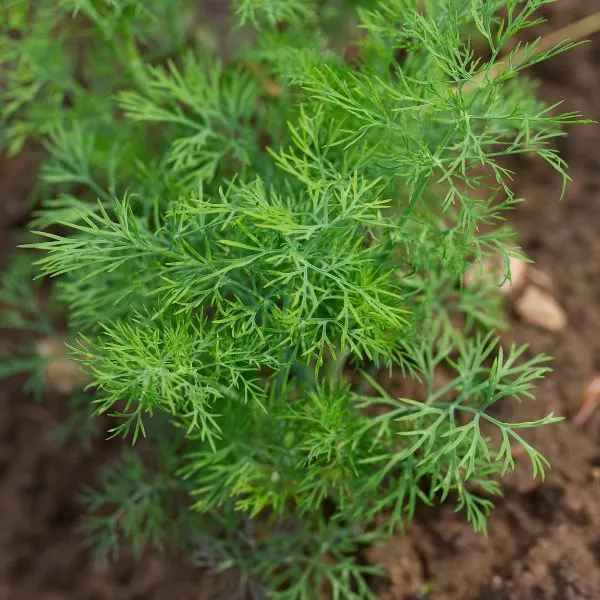
Dill is one essential ingredient for tangy pickles, but it is also an amazing companion plant and another powerhouse in the garden. Not only does this wonderful herb repel a lot of garden pests, it attracts a whole host of beneficial insects.
When dill is allowed to flower, it attracts insects such as ladybugs, parasitic wasps, and hoverflies. These insects feed on the pollen of the dill flowers, but they stick around and lay eggs. When the larvae hatch, they will feed on aphids, whiteflies, mites, thrips, and cucumber beetle larvae.
Dill flowers also attract pollinators. More honeybees, butterflies, and other pollen spreading insects are always a good thing in the garden.
Some gardeners even say that plants that are put into the ground around dill grow bigger, stronger, and often have a better yield, so get some dill seeds and spread them around your cucumbers. When you harvest them both, you have the start of some amazing dill pickles!
15. Chives
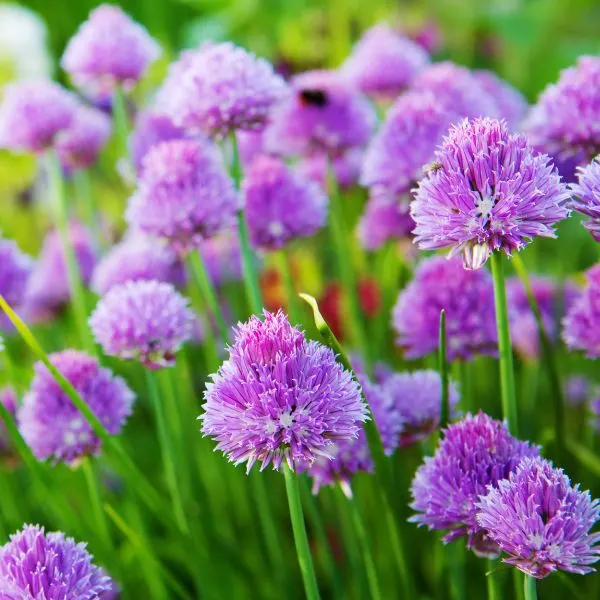
Chives are another member of the allium family of herbs and bulbs. They work the same way onions and garlic do to repel insects, rabbits, and other foragers. Chives don’t take up as much space as onions or garlic, and you can trim them very close to the ground, and they’ll just grow back.
Chives will slowly spread out, and if left to seed, you may find chives all throughout your garden. While this isn’t necessarily a bad deal, you don’t want any of these plants around your beans, peas, or asparagus.
16. Oregano
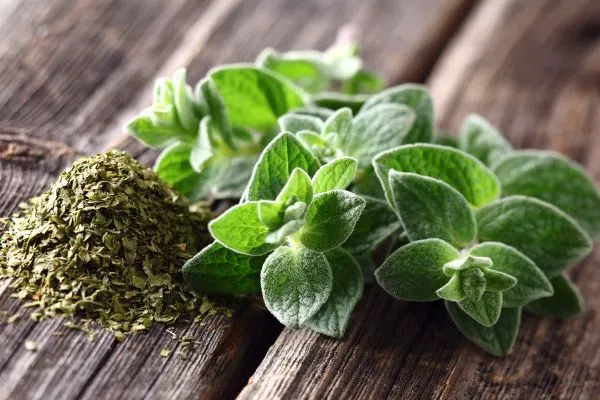
This herb is a great companion for most vegetables, but it’s especially beneficial for cucumbers. The smell of this herb helps to repel aphids and whiteflies, but it also attracts predatory insects, especially lacewings.
Go ahead and harvest some of the leaves for your Italian dishes and garlic bread, but leave a few to flower. The purple flowers aren’t only beautiful, but they especially attract lacewings.
These predatory insects will only feed on the pollen and nectar as adults but their offspring love to eat aphids, thrips, and other tiny sap drinking insects. These voracious larvae also consume cabbage loopers, and flea beetles, more insects that will cause severe damage to your cucumbers.
17. Borage
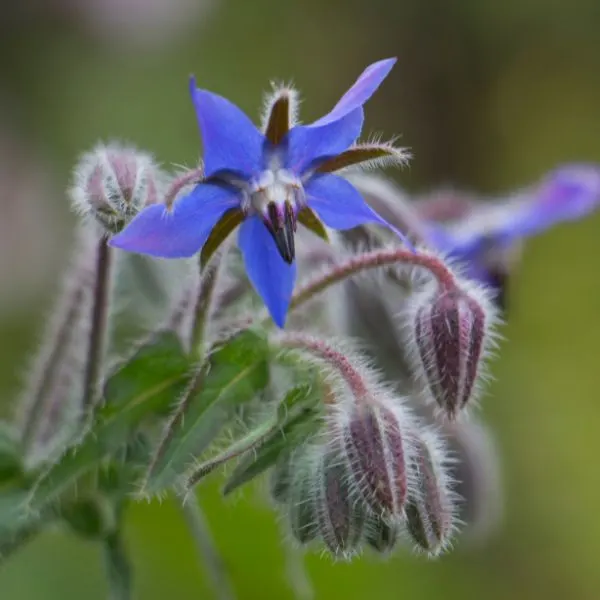
Borage is a triple boon to cucumbers. This herbaceous flower helps to repel cabbage loopers, wireworms, armyworms, and hornworms, while also attracting predatory insects and pollinators. Borage also has a deep root system that draws up vital trace nutrients to cucumber roots.
While you may just want to keep borage around for the beauty and pollinator attracting qualities, you can eat the flowers and leaves as well. Pluck the flowers off and add them to your salad for some visual interest and cucumber-like flavor. Use the leaves in soups, stews, or sauteed with other veggies.
When planting this reseeding annual, be sure to give it plenty of space between it and the cucumbers. Allowing plenty of airflow will help reduce the risk of powdery mildew and other fungal diseases.
One last quality that borage has, deer can’t stand it and won’t eat it.
Flowers
18. Sunflowers
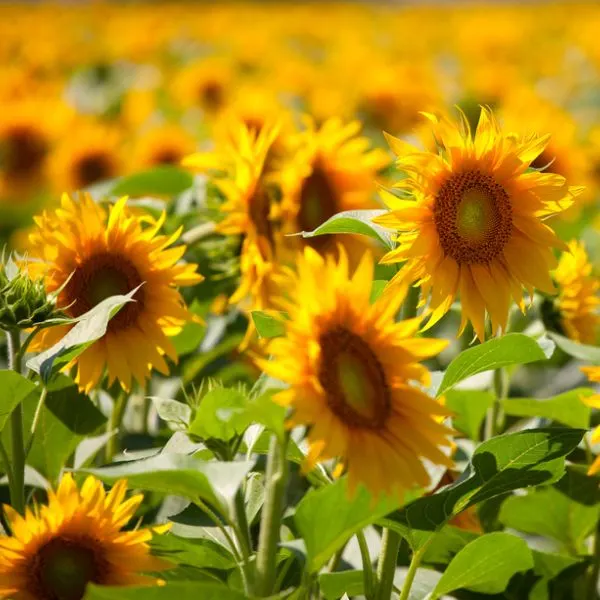
Plant sunflowers before you plant your cucumbers, and like corn, you’ll have a natural trellis for smaller cucumbers to grow on. You’ll probably want to look for tall sunflowers—5 or 6 feet tall at least. Cucumber vines often grow 5 to 6 feet tall or taller depending on the variety.
Sunflowers attract tons of pollinators with their huge, bright, flower heads. Bees and butterflies will visit the sunflowers, then stick around to feed on the nectar of your garden flowers.
Be careful with sunflowers though, they produce chemicals called sesquiterpene lactones which can impede or kill other plants. Cucumbers, beans, and squash seem to be immune to these compounds though.
19. Nasturtiums
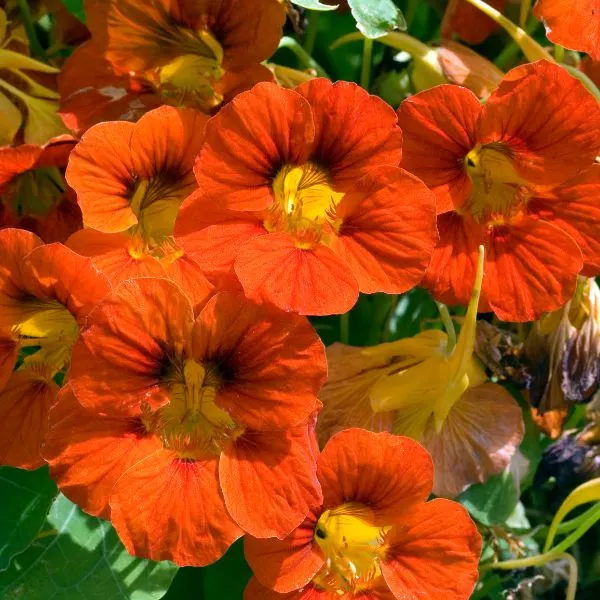
Nasturtiums are a quick growing annual flower that is also completely edible. The leaves and flowers can be quite peppery, and the seed pods are very similar to capers. They can all be eaten raw, or cooked in your favorite recipes.
Nasturtiums grow great with cucumbers because most varieties grow close to the ground and act like a natural mulch. They shade the soil and help to keep moisture in.
Another superpower nasturtiums have is their ability to attract aphids and keep them on the plant. Nasturtiums are a wonderful trap crop. A trap crop is a plant that is used sacrificially to keep pests from invading your garden or other more valuable plants.
Even when aphids infect nasturtiums, they can usually survive the onslaught and continue growing. You can also cut off infected parts of the plant and dispose of them to get rid of the sap sucking bugs.
20. Marigolds
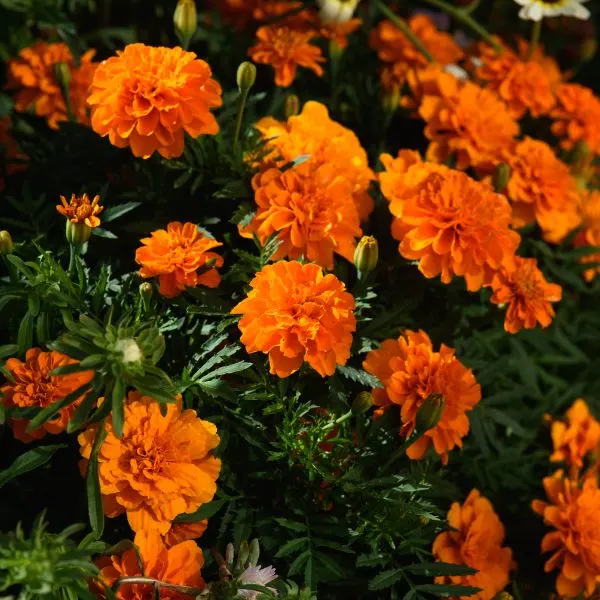
One of the best insect repelling flowers you can get, marigolds grow great with your cucumbers. Not only do they provide a beautiful contrast to a green garden with their yellow, orange, or red blooms, but marigolds produce a smell that most bugs and rabbits hate.
I used to despise the smell of them, but over the years I’ve come to enjoy the pungent, earthy smell. Maybe it’s just nostalgia, but it could be the insect repelling abilities that I enjoy.
Plant these around your cucumbers to act as a natural mulch. They will bloom until frost comes and takes them out.
Marigolds also attract ladybugs who will feed on mites, thrips, and aphids.
21. Sweet Alyssum
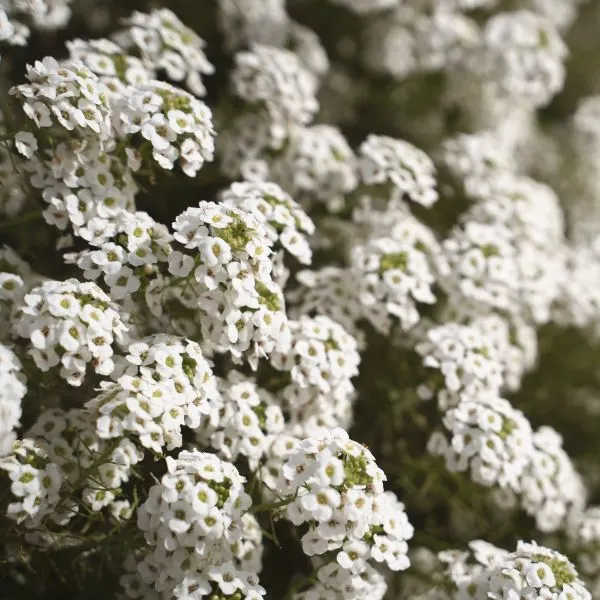
As the name suggests, these small flowers smell so fragrant your whole garden could become a sweet smelling paradise with just a few of these powerhouse flowers. This intense fragrance also attracts all the honeybees.
If you have cucumbers that need to be pollinated by insects for a good harvest, sweet alyssum might be your best friend. It brings all the hardest working pollinators to your garden.
22. Calendula
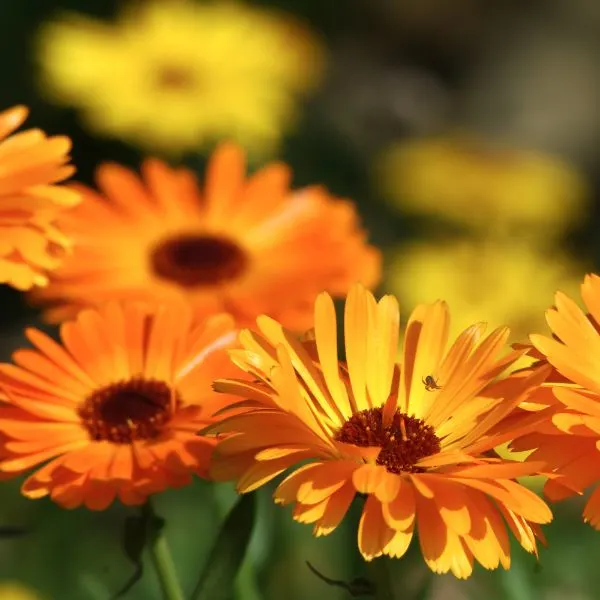
If you have less than ideal soil, such as heavy clay, calendula will grow there. These daisy-like flowers grow resinous flowers that attract pollinators and predatory insects. Lacewings, hoverflies, and predatory wasps all love these flowers.
Plant these hardy flowers among your cucumbers and you’ll have your own army of pest eating insects ready to protect your crops.
Plants That Shouldn’t Be Combined With Cucumbers
Just as there are great plants that can benefit your cucumbers, there are also plants that should be kept far away from your cukes. Some will compete for nutrients and water, and others may attract insects that will damage your cucumbers. Here are 7 plants that are the worst companions for cucumbers.
1. Potatoes
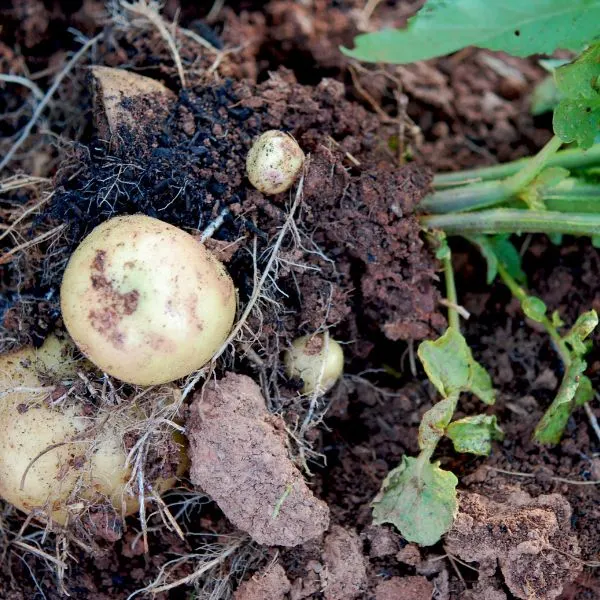
Potatoes need deep, nutrient rich soil, and will drain out all the nutrition from the soil. If you plant cucumbers and potatoes together, these heavy feeders will fight for every morsel, and you’ll end up with two types of weak, ill-producing plants.
These plants are also very thirsty, meaning they will also fight for water and you’ll end up with weak plants, or you’ll have to water them so much you won’t have time for anything else.
Even if you are able to get both cucumbers and potatoes playing nice with each other, when you go to harvest your potatoes, you’ll likely damage your cucumber’s roots. These vines hate to have their roots disturbed. This is the reason it’s best to plant cucumber seeds directly outside instead of trying to start them inside, then try and transplant them.
Potatoes are also prone to blight, which can spread to your cucumbers and ruin them.
2. Squash And Melons
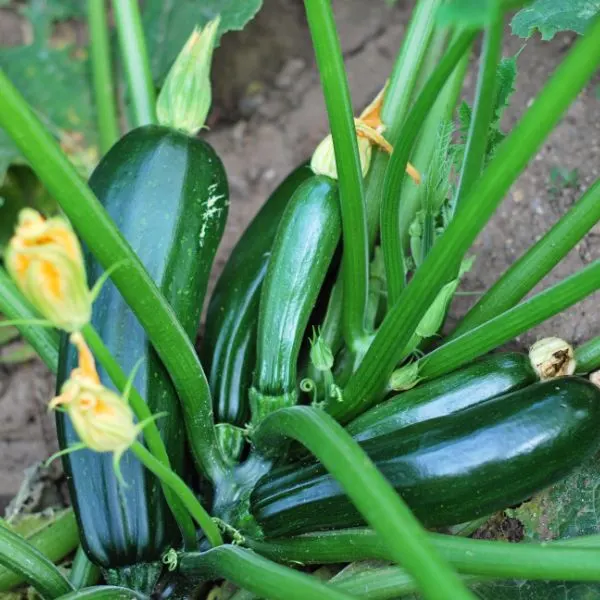
Cucumbers, squash, and melons all are from the same family. You’d think they would get along and grow together great, but this is a dysfunctional family that is better off far away from each other.
The same insects like to feed on all of these plants, so if you plant a bunch together, it’s like ringing the dinner bell to these insects for miles around. Also, if you have different vining varieties, they will compete for space and get entangled.
If one of these plants gets sick, it can easily spread to others in the family. Just to be safe, keep your melons, squash, and cucumbers spaced away from each other.
3. Mint

Any species of mint are very aggressive growers so you’ll have to be very careful when planting any variety. It can quickly take over a raised bed, and cause havoc on your garden. Mint not only reseeds itself very easily, but it spreads underground runners.
Mint in the garden can choke out cucumbers and other plants with its aggressive sprawling. It will compete for resources, and mint can cause your cucumbers to taste different when it grows close to them.
I’m not saying you should never grow mint, I love it on ice cream, in tea, and in a refreshing cocktail, but keep it in a pot and keep an eye on it. Once it gets loose, it’s difficult to tame it.
4. Sage
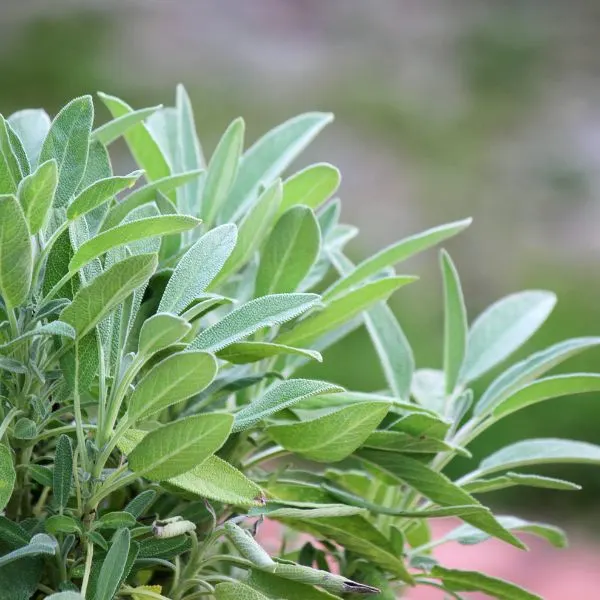
Another aromatic herb that is touted for its insect repelling abilities is sage. This is a tough herb that most insects stay away from, and it’s great in certain places, just not near your cucumbers.
Unlike oregano—which seems to be the sole exception here—pungent herbs tend to affect the flavor of cucumbers. There is also some evidence, though limited, that suggests sage may restrict cucumber growth.
5. Basil
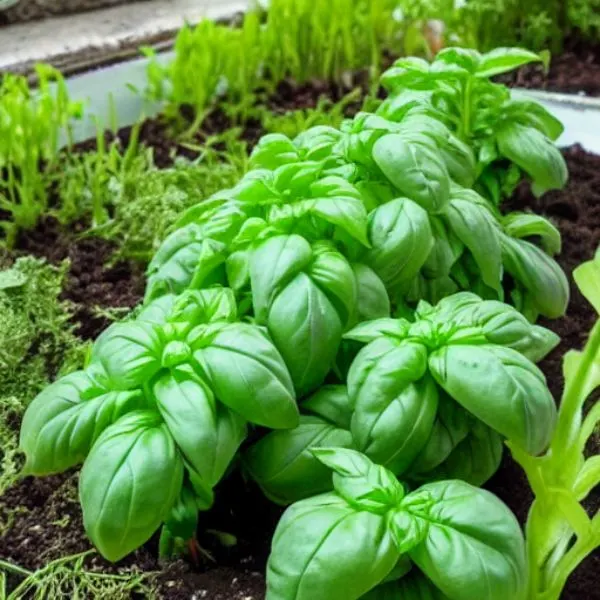
I love fresh basil. I use it to make pesto, sprinkle it liberally on pasta and bread, and drop whole leaves on pizzas and more, so I have plenty of basil plants in my garden.
This herb is one of the best companion plants for tomatoes. It increases the flavor, repels most tomato eating insects, and attracts plenty of beneficials, but keep it away from your cucumbers.
Strong smelling basil just does something funky to the taste of cucumbers though. Keep these two plants far away from each other.
6. Fennel

Fennel is another strong smelling herb that needs to stay away from your cucumbers. Not only will this plant possibly make your cucumbers taste “funny,” but the roots secrete a substance that can inhibit the growth of other vegetables.
7. Anything From The Brassica Family
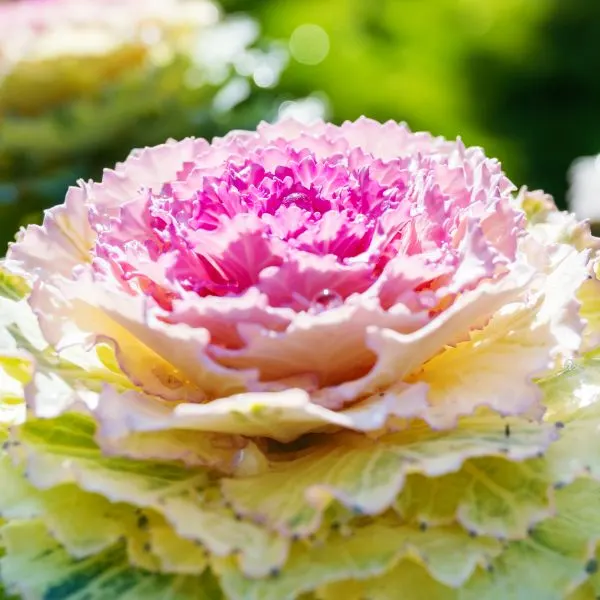
These include broccoli, cauliflower, cabbage, Brussels sprouts, and kale. Plants from this family are heavy feeders that require a lot of water to keep them happy. Planting them near your cucumbers will cause a competition for water and nutrients.
You will be left with weak plants that don’t produce much for you, so keep them well away from each other.
Brassicas also attract insects such as cabbage loopers and others that don’t have a problem shifting focus and munching on your cucumber plants. Reduce the temptation, plant them separately.
Finishing It Up
There are plenty of companion plants that will help you grow tons of tasty, plump, cucumbers for all your needs. Some will help to keep pests away, others can extract deep seated nutrients, and others will help your cucumber plants be the best they can be.
If you haven’t tried companion planting, give it a try. It’s something that will help you grow bigger, healthier crops while utilizing normally lost space. Another benefit to companion planting is using nature to keep your plants healthy, instead of using toxic pesticides.
Get out there and dig in the dirt, and good luck with all your gardening endeavors!
More companion plants
